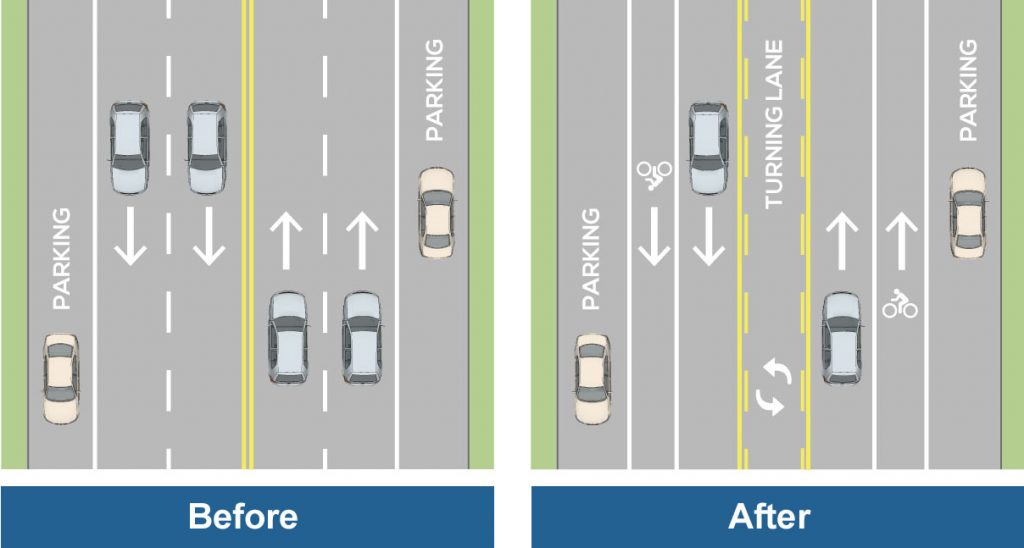Overview
Roadway reconfigurations, also known as road diets, typically involve converting an existing four-lane undivided roadway to a three-lane roadway consisting of two through lanes and a center two-way left-turn lane.
Benefits
Benefits of roadway reconfigurations may include:
- An overall crash reduction of 19 to 47 percent.
- Reduction of rear-end and left-turn crashes due to the dedicated left-turn lane.
- Reduced right-angle crashes as side street motorists cross three versus four travel lanes.
- Fewer lanes for pedestrians to cross.
- The multiple threat pedestrian crash type is essentially eliminated.
- Opportunity to install pedestrian refuge islands, bicycle lanes, on-street parking, or transit stops.
- Traffic calming and more consistent speeds since the most prudent driver now sets the speed for all drivers to the rear.
- A more community-focused, “Complete Streets” environment that better accommodates the needs of all road users.
A roadway reconfiguration can be a low-cost safety solution when planned in conjunction with a simple pavement overlay, and the reconfiguration can be accomplished at no additional cost. Because of a proven track record for improving safety within communities, the Federal Highway Administration has included Roadway Reconfigurations on their top 20 list of proven safety countermeasures.
